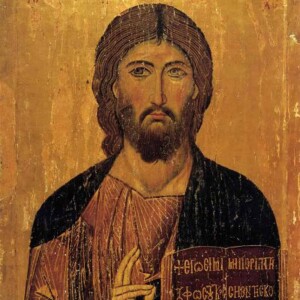
The History of the Christian Church
Religion & Spirituality:Christianity

This episode of CS is the 3rd Overview in the series so far.We’ve spent quite a bit of time tracking the Reformation and need now to give a brief overview and analysis of what we’ve seen as we prepare for launching into the next era of Church History.There’s a well-worn saying in English I’m not sure other languages duplicate. It says that “you can’t see the forest for the trees.” The idea is that details can obscure the bigger picture. You fail to see a forest because all you see is a lot of trees.As we’ve spent many episodes tracking the Reformation and Counter-Reformation, we may be so distracted by all the names, places, dates and movements, we miss the larger picture and the summary effect of all this on the people of 16th C.Trends from the previous century came to fruition in the 16th that made for a monumental shift in people’s idea of what The Church was. Consider a couple of the things that happened in the 15th C.
view more
- Constantinople fell to the Turks in 1453.
- The New World was opened to Europe at the close of the Century.
More Episodes
68 de Papas y Príncipes
 2023-08-04
2023-08-04
 2023-08-04
2023-08-04
67 Aqui no hay bobos
 2023-07-26
2023-07-26
 2023-07-26
2023-07-26
66 El Buey de Dios
 2023-07-01
2023-07-01
 2023-07-01
2023-07-01
65 Escolasticismo
 2023-06-14
2023-06-14
 2023-06-14
2023-06-14
64 La Controversia Eucarística
 2023-06-14
2023-06-14
 2023-06-14
2023-06-14
63-Investidura
 2023-05-08
2023-05-08
 2023-05-08
2023-05-08
62 Despidiendo al Monacato
 2023-05-07
2023-05-07
 2023-05-07
2023-05-07
61-Domingo
 2022-06-12
2022-06-12
 2022-06-12
2022-06-12
60-Francisco
 2022-05-24
2022-05-24
 2022-05-24
2022-05-24
59-Negocios de Monjes Parte 2
 2022-05-10
2022-05-10
 2022-05-10
2022-05-10
58-Negocios de Monjes Parte 1
 2022-05-10
2022-05-10
 2022-05-10
2022-05-10
57-Las Cruzadas Parte 4
 2022-03-20
2022-03-20
 2022-03-20
2022-03-20
56-Las Cruzadas Parte 3
 2022-03-18
2022-03-18
 2022-03-18
2022-03-18
55-Las Cruzadas Parte 2
 2022-03-09
2022-03-09
 2022-03-09
2022-03-09
54-Las Cruzadas Parte 1
 2022-03-01
2022-03-01
 2022-03-01
2022-03-01
Special Announcement to CS Subscribers
 2022-03-01
2022-03-01
 2022-03-01
2022-03-01
The Change Part 10
 2021-12-26
2021-12-26
 2021-12-26
2021-12-26
The Change Part 9
 2021-12-19
2021-12-19
 2021-12-19
2021-12-19
The Change Part 8
 2021-12-12
2021-12-12
 2021-12-12
2021-12-12
The Change Part 7
 2021-12-05
2021-12-05
 2021-12-05
2021-12-05
012345678910111213141516171819
Create your
podcast in
minutes
- Full-featured podcast site
- Unlimited storage and bandwidth
- Comprehensive podcast stats
- Distribute to Apple Podcasts, Spotify, and more
- Make money with your podcast
It is Free
- Privacy Policy
- Cookie Policy
- Terms of Use
- Consent Preferences
- Copyright © 2015-2024 Podbean.com



